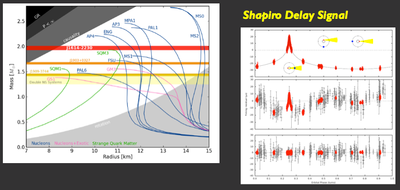EVLA Observations of a proto-cluster of molecular gas rich galaxies at z = 4.05
Investigators: C.L. Carilli (NRAO), J. Hodge (MPIA), F. Walter (MPIA), D. Riechers (Caltech), E. Daddi (CEA Saclay), H. Dannerbauer (MPIA), G. Morrison (Univ Hawaii)
 We present observations of the molecular gas in the GN20 proto-cluster of galaxies at z =4.05 using the Expanded Very Large Array (EVLA). This group of galaxies is the ideal laboratory for studying the formation of massive galaxies via luminous, gas-rich starbursts within 1.6 Gyr of the Big Bang. We detect three galaxies in the proto-cluster in CO 2-1 emission, with gas masses (H2) between 1010 and 1011 x (α/0.8) M(sun). The emission from the brightest source, GN20, is resolved with a size ~2", and has a clear north-south velocity gradient, possibly indicating ordered rotation. The gas mass in GN20 is comparable to the stellar mass (1.3 x 1011 x (α/0.8) M(sun) and 2.3 x 1011 M(sun), respectively), and the sum of gas plus stellar mass is comparable to the dynamical mass of the system (~ 3.4 x 1011[sin(i)/sin(45o)]-2 M(sun), within a 5kpc radius. There is also evidence for a tidal tail extending another $2"$ north of the galaxy with a narrow velocity dispersion. GN20 may be a massive, gas rich disk that is gravitationally disturbed, but not completely disrupted. There is one Lyman-break galaxy (BD29079) in the GN20 proto-cluster with an optical spectroscopic redshift within our search volume, and we set a 3 sigma limit to the molecular gas mass of this galaxy of 1.1 x 1010 x (α/0.8) M(sun).
We present observations of the molecular gas in the GN20 proto-cluster of galaxies at z =4.05 using the Expanded Very Large Array (EVLA). This group of galaxies is the ideal laboratory for studying the formation of massive galaxies via luminous, gas-rich starbursts within 1.6 Gyr of the Big Bang. We detect three galaxies in the proto-cluster in CO 2-1 emission, with gas masses (H2) between 1010 and 1011 x (α/0.8) M(sun). The emission from the brightest source, GN20, is resolved with a size ~2", and has a clear north-south velocity gradient, possibly indicating ordered rotation. The gas mass in GN20 is comparable to the stellar mass (1.3 x 1011 x (α/0.8) M(sun) and 2.3 x 1011 M(sun), respectively), and the sum of gas plus stellar mass is comparable to the dynamical mass of the system (~ 3.4 x 1011[sin(i)/sin(45o)]-2 M(sun), within a 5kpc radius. There is also evidence for a tidal tail extending another $2"$ north of the galaxy with a narrow velocity dispersion. GN20 may be a massive, gas rich disk that is gravitationally disturbed, but not completely disrupted. There is one Lyman-break galaxy (BD29079) in the GN20 proto-cluster with an optical spectroscopic redshift within our search volume, and we set a 3 sigma limit to the molecular gas mass of this galaxy of 1.1 x 1010 x (α/0.8) M(sun).
Publication: ApJ Letters EVLA special issue, 2011. arXiv: 1105.2451V1 (29 Aug 2011)


